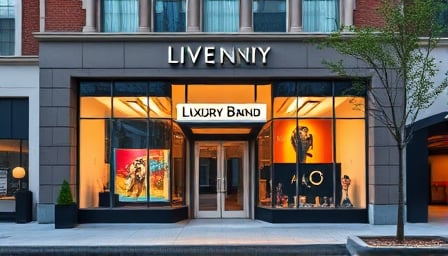Corporate News
LVMH Moët Hennessy Louis Vuitton SE, the world’s preeminent luxury conglomerate, is once again dominating headlines with a cascade of strategic maneuvers that threaten to reshape the very architecture of the high‑fashion industry.
Bernard Arnault Eyes Armani
Chairman Bernard Arnault has openly declared his ambition to deepen LVMH’s footprint in the Italian market by courting a partnership with Giorgio Armani. This overt ambition signals a pivot toward consolidating the luxury segment under a handful of titans, and it raises the specter of a monolithic conglomerate that could stifle independent creativity and erode brand differentiation.
Giorgio Armani’s Will Unleashes a Sale
In a startling revelation, the late fashion icon’s estate has unveiled a will that explicitly authorizes the sale of a 15 % stake in the eponymous house to any of three high‑profile buyers—LVMH, EssilorLuxottica, or L’Oréal—within eighteen months. The foundation retains the right to offload additional shares later, thereby creating a protracted, potentially volatile de‑structuring of one of the industry’s most storied brands.
This move is not a quiet hand‑shake; it is a calculated gamble that threatens to dilute the brand’s heritage while injecting fresh capital into a highly competitive arena. It also foreshadows a potential mega‑merger that could amalgamate luxury powerhouses into an unprecedented behemoth, raising antitrust concerns and redefining market dynamics.
Market Reactions: Cautious Optimism
The market’s reaction has been measured. LVMH’s shares registered a modest uptick, reflecting investor anticipation of a lucrative partnership. Yet analysts caution that the deal’s terms remain nebulous. Until concrete details surface—valuation, governance, and integration strategies—investors are likely to maintain a watchful stance.
Diversifying the Luxury Palette
Amid these high‑stakes negotiations, LVMH has simultaneously broadened its product line to woo younger consumers. By infusing contemporary aesthetics and digital innovation into its offerings, the conglomerate seeks to diversify revenue streams and counteract the erosion of traditional luxury patronage. This dual strategy—acquisition on one hand and product diversification on the other—underscores LVMH’s relentless pursuit of market dominance.
The Bottom Line
LVMH’s current maneuvers—Arnault’s overt interest in Armani, the strategic stake sale, and a deliberate expansion into youth‑centric markets—are not merely corporate footnotes. They represent a concerted effort to entrench the conglomerate’s supremacy, reshape the competitive landscape, and, perhaps, redefine what luxury means in a rapidly evolving global economy. Whether this will culminate in a benign evolution or an aggressive monopolization remains to be seen, but the implications are unequivocally profound.
